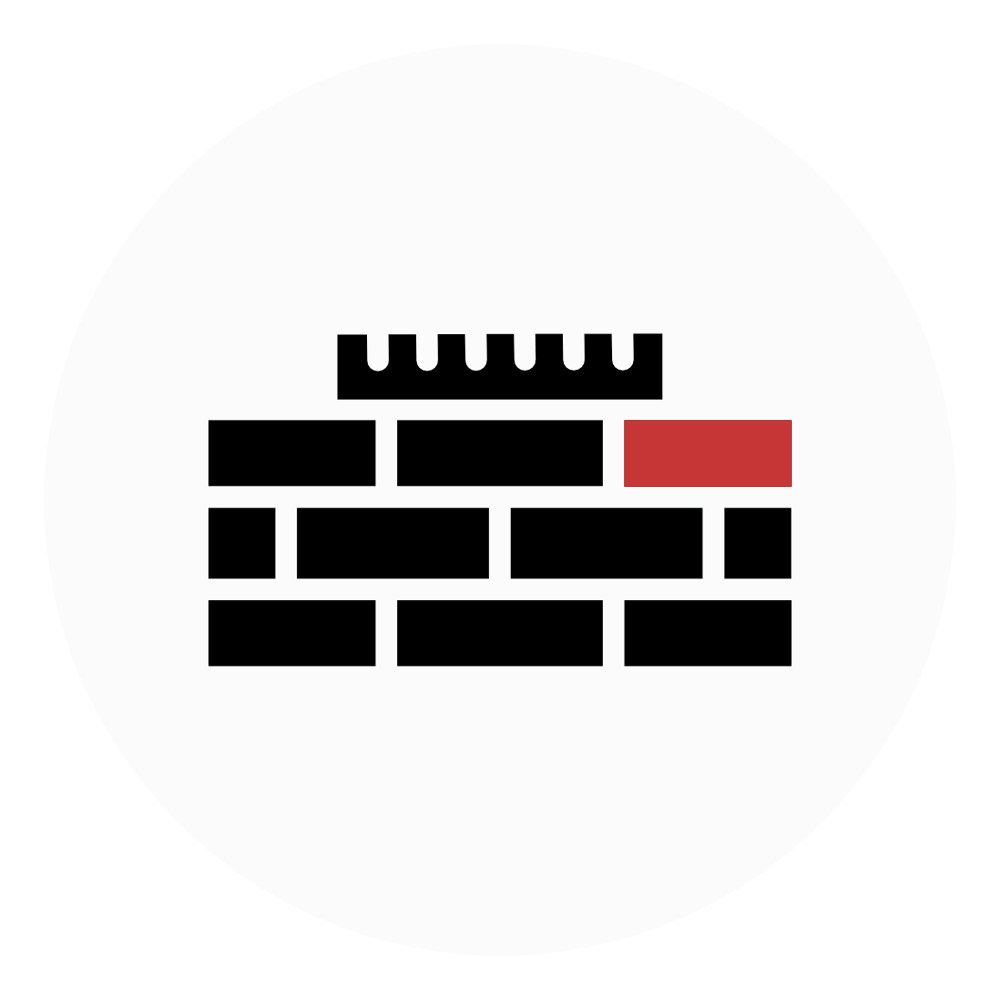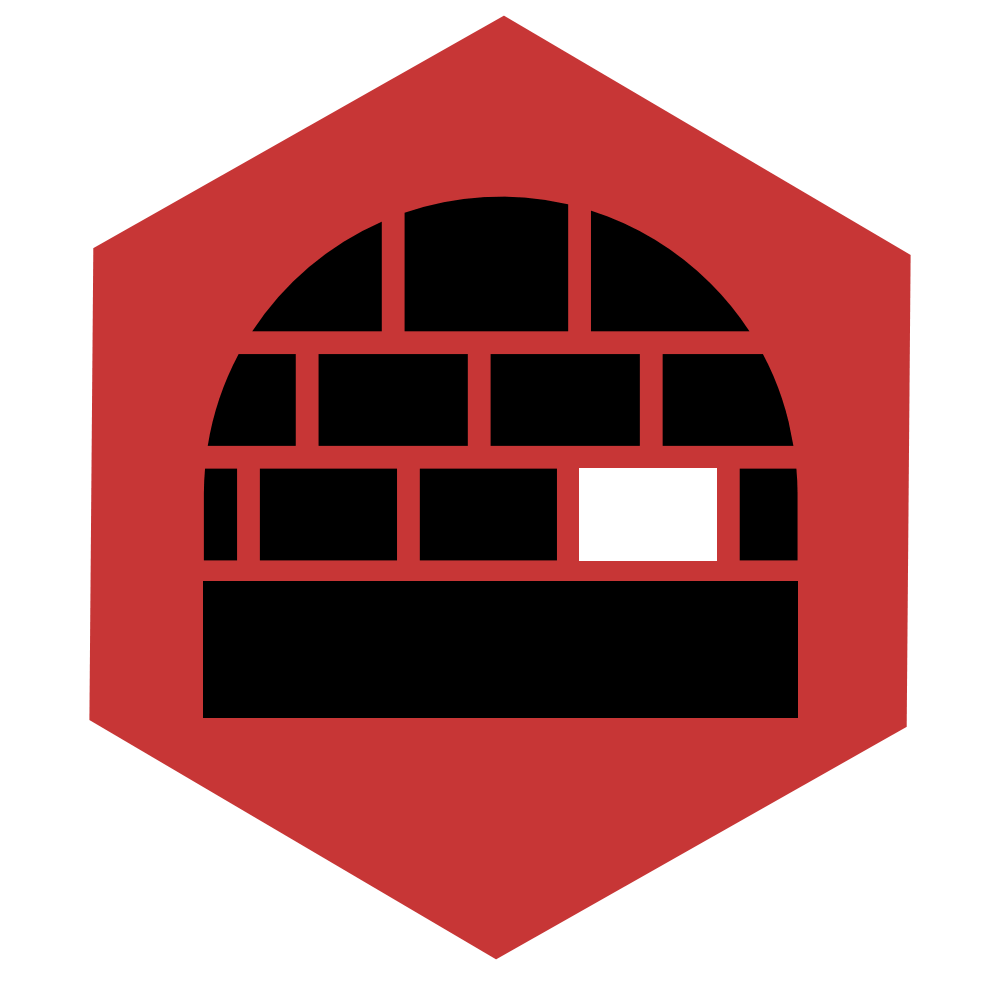Frequently Asked Questions
Build Hardened offers discreet, multi-level residential security consultancy and project management services. This FAQ answers common questions about our methods, scope, privacy approach, and how we work with clients.
What is Build Hardened and what do you do?
Build Hardened is a consultancy and project management firm specializing in residential security architecture and hardening.
We design and oversee the implementation of layered, highly tailored physical security solutions for private homes, from reinforced doors and windows to full subterranean bunkers. Our services cover five escalating levels of home defense through the B.H.A.R.D. Protocol™ (Build Hardened Advanced Residential Defense).
What makes Build Hardened different from typical home security providers?
We operate beyond the scope of alarms, cameras, and smart home integrations - our focus is on true structural defense and concealment.
Our approach emphasizes compartmentalization, discretion, and real-world threat mitigation. We advise on trap foyers, panic rooms, EMP shielding, high-spec ballistic glass, and covert reinforcement - all designed to blend invisibly into high-end or heritage homes without compromising aesthetics or permissions.
Do you offer turnkey construction or only consultancy?
We provide consultancy, project management, and client-side representation - but we do not build directly.
We work with a vetted network of manufacturers and specialist contractors in doors, glazing, blast protection, underground shelters, and advanced materials. Where necessary, we can provide or coordinate with your architects, planners, or private security firms to deliver a seamless and confidential build process.
Is Build Hardened only for ultra-high net worth individuals?
While many of our clients are HNWIs, we also work with professionals, families, and individuals who take their personal security seriously.
Our tiered system allows for scalable hardening - from modest upgrades like reinforced doors, windows and locks to advanced defenses such as ballistic shielding, surveillance-free panic rooms - and deep earth bunkers. The goal is to make professional-grade protection accessible without excess or extravagance.
How does your five-level B.H.A.R.D. Protocol™ system work?
Our system is structured across five defined levels - each one adding deeper layers of protection, complexity, and concealment.
Level 1 (BH-Fortify) begins with basic structural upgrades and entry reinforcement. By Level 5 (BH-Blacksite), we're looking at advanced subterranean infrastructure, autonomous power, secure comms, and protection against emerging threats including EMP or drone surveillance. Clients choose the level aligned with their perceived threat profile and risk tolerance.
How private is my communication with Build Hardened?
We do not track, log, or analyze visitors. Our site uses no cookies, no third-party JavaScript, and no external tracking of any kind.
For all client correspondence, we recommend using privacy-focused email services such as ProtonMail or Tutanota, and accessing our site via a trusted VPN. Clients seeking maximum anonymity are welcome to initiate communication through secure methods or legal proxies. Your privacy is engineered into every layer of our engagement model.
What types of materials or systems do you specify?
Depending on your chosen level, we may recommend reinforced steel, ballistic-rated glazing (P8B through BR7), Faraday cages, and other advanced materials.
We do not typically list brands or suppliers on our site for security reasons, but we work with trusted manufacturers including those supplying military and diplomatic compounds. Our material recommendations are selected based on threat modeling, site conditions, and your specific goals - always with discretion and performance as top priority.
Are you affiliated with the government or military?
No, Build Hardened is a private entity. However, we may consult with individuals who possess operational military or intelligence experience.
Where appropriate and permitted, we may retain consultants with backgrounds in defense, security services, or strategic operations to ensure our recommendations are grounded in real-world counter-threat knowledge. Their expertise is integrated into design - not revealed to the client unless specifically agreed upon in advance.
Do you offer services internationally?
Yes, Build Hardened serves clients in the UK and the US, Europe and the Middle East.
Some physical installations may depend on local contractors and permissions, but we can assist with virtual consultancy, planning documentation, and remote coordination worldwide. All work is conducted with cultural, regulatory, and privacy sensitivity.
What is compartmentalization and why is it important?
Compartmentalization is the strategic division of a building into security zones, each isolated from the next in both function and access.
This approach means that even if one layer is breached - be it digital, physical, or social - damage is limited to that compartment. We use hardened doors, hidden thresholds, multi-factor access controls, and vertical displacement (i.e., hidden stair access) to isolate secure areas. Compartmentalization is foundational to resilient design and central to our B.H.A.R.D. Protocol™ at all levels.
How do you select the materials used in your designs?
Every material is selected based on its threat resistance, appearance, installation tolerance, and how well it integrates into residential architecture.
We routinely specify blast-resistant steel, advanced composite panels, ultra-high-performance concrete (UHPC), ballistic and fire-rated core materials, and tactical finishes designed to mimic ordinary decor. Nothing we recommend is “off the shelf.” Even common materials like timber or drywall may be augmented with internal reinforcement layers or treated to resist cutting, heat, or forced entry. We balance performance with invisibility.
What types of bullet-resistant or forced-entry glass do you recommend?
We specify glass based on the exact threat model - usually starting at P6B (heavy tool resistance) and scaling up to BR7 (armor-piercing rifle rounds).
Options include laminated polycarbonate hybrids, layered glass-composite sandwiches, and even vacuum-spaced ballistic glazing for thermal and acoustic benefits. We never use “one size fits all” solutions. In most residential applications, we integrate high-spec forced-entry glass into traditional sash or casement profiles, allowing historic homes to meet embassy-grade resilience without visual compromise.
Do your systems include thermal or acoustic protection?
Yes. Many materials we specify offer superior insulation as a by-product of their ballistic or blast resistance.
For example, multi-layer wall systems that resist breach also serve as powerful acoustic buffers - critical in panic rooms or hidden corridors. Likewise, vacuum-sealed ballistic glazing offers best-in-class thermal insulation. We often exploit these overlapping benefits to improve a property’s energy profile and livability, not just its security rating.
What role do advanced composites play in your designs?
Advanced composites allow us to achieve military-grade performance with minimal bulk, weight, or visual signature.
These include Kevlar-type woven panels, carbon-reinforced laminates, fire-rated synthetics, and steel-ceramic hybrids. We use them inside walls, under floors, and behind ceilings - out of sight, but always on duty. Because composites can be fabricated in non-standard dimensions, they’re ideal for retrofitting historic or architecturally sensitive buildings without disruption.
Can materials be hidden in plain sight?
Yes - and that’s one of our specialties. Our designs often integrate reinforced or bullet-resistant cores inside seemingly ordinary elements.
For example, a panelled oak door may conceal a triple-layer ballistic core. A timber-clad stair may conceal a structural trapdoor. Even art installations and furniture can conceal reinforcement or secondary access. In security architecture, what’s not seen is often what matters most.
Do you offer designs for trap spaces or defensive foyers?
Yes. Where permitted, we advise on the use of trap spaces, dead zones, and interlocks as a means of delaying or detaining intruders without lethal force.
More typcal in high-security environments like diamond exchanges or embassies, these concepts can be subtly adapted to residential use. A decorative foyer may become a “dead man’s trap” under specific threat conditions, with automatic deadlocking, strobing lights, smoke or fog deployment, and emergency lockdown protocols. All trigger conditions are client-defined and never activated without deliberate intent.
Do you offer protection against drone surveillance or electronic threats?
Yes. In higher threat scenarios, we can integrate passive and active countermeasures against aerial and electronic intrusion.
This may include angled overhangs to disrupt downward sightlines, shielding mesh to suppress RF signal leakage, or room-sized Faraday cages built into SCIF-grade office spaces or vaults. For certain tiers, we can also advise on portable anti-drone deterrents and safe comms strategies for off-grid or crisis operations.
What happens to my project data after completion?
All data not legally required for recordkeeping, accounting, or warranty claims is securely destroyed upon completion of work - either by request or by policy default.
We operate under a strict non-retention framework. For ongoing service contracts, you may opt for retained encrypted backups under a separate security protocol. Build Hardened is registered with the UK ICO and complies with GDPR and global privacy standards. Your project will never be used in marketing, referenced in portfolio materials, or discussed outside the authorized circle.
How do you integrate access control into residential properties?
We layer access control discreetly, such as using a combination of digital, biometric, and physical safeguards - always tailored to the threat model and aesthetic of the property.
Rather than overt security systems, we tend to favor hidden or seamless solutions such as biometric locks concealed in paneling, NFC or RFID readers embedded in architectural detailing, and mechanical failsafes behind decorative elements. At higher tiers, we integrate multi-factor protocols - like a biometric scan plus timed magnetic latch - to delay or deny access even under duress.
Do your designs include hardened safe rooms or vaults?
Yes. All BH-Defend level projects and above can include designated secure spaces, custom-designed to blend with the home while offering extraordinary protection.
We offer panic rooms, vaults, and utility sanctuaries designed to withstand ballistic assault, forced entry, fire, and even extended siege. Materials used range from reinforced concrete to ballistic composite panels, depending on the threat level. Access can be covert (e.g., behind shelving or mirrors), and all rooms can feature independent ventilation and communication options.
What do you mean by “compartmentalization” in a security context?
Compartmentalization is the principle of isolating key areas of a property so that access, visibility, and vulnerability are restricted zone by zone.
This means that even if one layer is breached, the rest of the home - and its occupants - remain protected. We may achieve this through hidden partitions, secure internal doors, auto-locking zones, and layered surveillance and alert systems. Compartmentalization is especially effective in larger homes and estates, where delays can be life-saving.
What materials do you use to harden walls, ceilings, and doors?
We employ a wide range of materials depending on the level - ranging from proprietary steel-laminate cores to ultra-high-performance concrete and ballistic composites.
We might use military-grade Kevlar sheeting, HDPE plastic armor layers, and boron-hardened steel reinforcements hidden within traditional construction. Where possible our wall and ceiling hardening solutions are fully integrated into the home’s original design, remaining invisible to guests but offering substantial resistance to attack or blast.
We also utilize advanced concrete technologies developed for high-risk government and military facilities. These include fiber-reinforced ultra-high-performance concrete (UHPC) with compressive strengths exceeding 150 MPa, embedded mesh composites, and nano-silica additives for extreme durability. Select blends are designed to resist angle grinders, thermal lances, and even shaped charges - making them ideal for secure vault construction and internal refuge zones.
Fire resistance is engineered in from the earliest design phase. Materials such as magnesium oxide boards, intumescent coatings, and layered fire-retardant composites help maintain structural integrity and breathable environments during high-temperature events. Internal safe zones can be designed to remain habitable for extended periods even in extreme fire conditions.
Acoustic insulation is another layer of protection - essential not only for privacy, but for counter-surveillance. We can incorporate mass-loaded vinyl, floating wall assemblies, and decoupled ceiling structures that can achieve STC ratings of 60+, creating spaces that are extremely difficult to eavesdrop upon or detect activity within.
To reduce thermal visibility from drones or satellites, we optionally include heat-signature suppression. This involves thermally isolated wall systems, low-emissivity insulation, and exterior cladding that blends into ambient environmental temperatures - rendering hardened zones indistinguishable from their surroundings under infrared observation.
Tell me about the bulletproof glass you use - what standards do they meet?
We typically specify glass that meets or exceeds European EN 1063 standards (P6B to BR7), offering resistance to heavy rifle fire, sustained impact, and forced penetration.
Our primary suppliers are world-leading for performance, and glass units are typically multi-laminate compositions of polycarbonate, glass, and composite materials. We offer solutions that maintain the aesthetic of historic or listed buildings, with invisible retrofit frames and coatings that match original fenestration while delivering modern protection.
What emergency scenarios do you design for?
Our systems are engineered to withstand a broad range of emergency events - from home invasions and natural disasters to extended blackouts, EMP strikes, and even digital warfare.
Each project begins with a custom threat profile. This might include localized civil unrest, high-profile abduction risk, or long-duration infrastructure failure. We then engineer in the appropriate defensive architecture - ranging from instant lockdown doors and biometric access control to secure fallback zones with breathable air, water filtration, and independent power.
Escape planning is built into every design. From hidden egress tunnels and roof exits to internal “trap rooms” designed to slow or mislead intruders, every scenario is considered. Even seemingly mundane features may serve as hidden rapid points of transition.
Power autonomy can be achieved through layered systems - solar + battery, off-grid diesel or propane generators, and in some cases kinetic or thermal generation. Power systems may be EMP-hardened and physically isolated, with redundant transfer switches and shielded cabling. Select clients opt for entire rooms or structures encased in conductive mesh, creating functional Faraday environments that protect against both electromagnetic pulses and invasive digital surveillance.
AI-proofing is no longer a fringe concern. For clients with intellectual property, political visibility, or general privacy concerns, we offer designs that minimize digital exposure. This includes shielding smart devices, hard-segmenting network access, and eliminating wireless backchannels entirely. At the highest levels, homes are designed to operate in full "dark mode" - no data leakage, no camera access, no cloud dependencies, and no voice assistants.
How much does a Build Hardened project cost?
Costs vary significantly based on risk level, home size, existing structure, and specific threats being mitigated - but we can offer rough guidelines as a percentage of your home’s market value.
As a very general rule of thumb, expect to invest around 3-5% of your home’s value for a complete Level 1 (BH-Fortify) upgrade. Level 2 (BH-Defend) may rise to 10%, Level 3 (BH-Shield) could reach 20%, and Level 4 (BH-Bunker) might require an investment of 30–40% or more. Level 5 (BH-Blacksite) pricing is non-public and subject to international-level threat modeling.
These figures are indicative only and can vary greatly depending on the architectural demands, local regulatory requirements, the materials and methods chosen, and the scale of protective systems involved. Every project is unique - but this gives a grounded starting point for consideration.
How do I get started with Build Hardened?
The first step is to reach out via the secure email listed on our contact page, providing only what you feel comfortable sharing.
We can then schedule a private consultation to assess your needs, threat perception, and desired outcomes. From there, we can prepare a bespoke roadmap that respects your privacy, your property, and your principles.
Start Risk Assessment ➧




